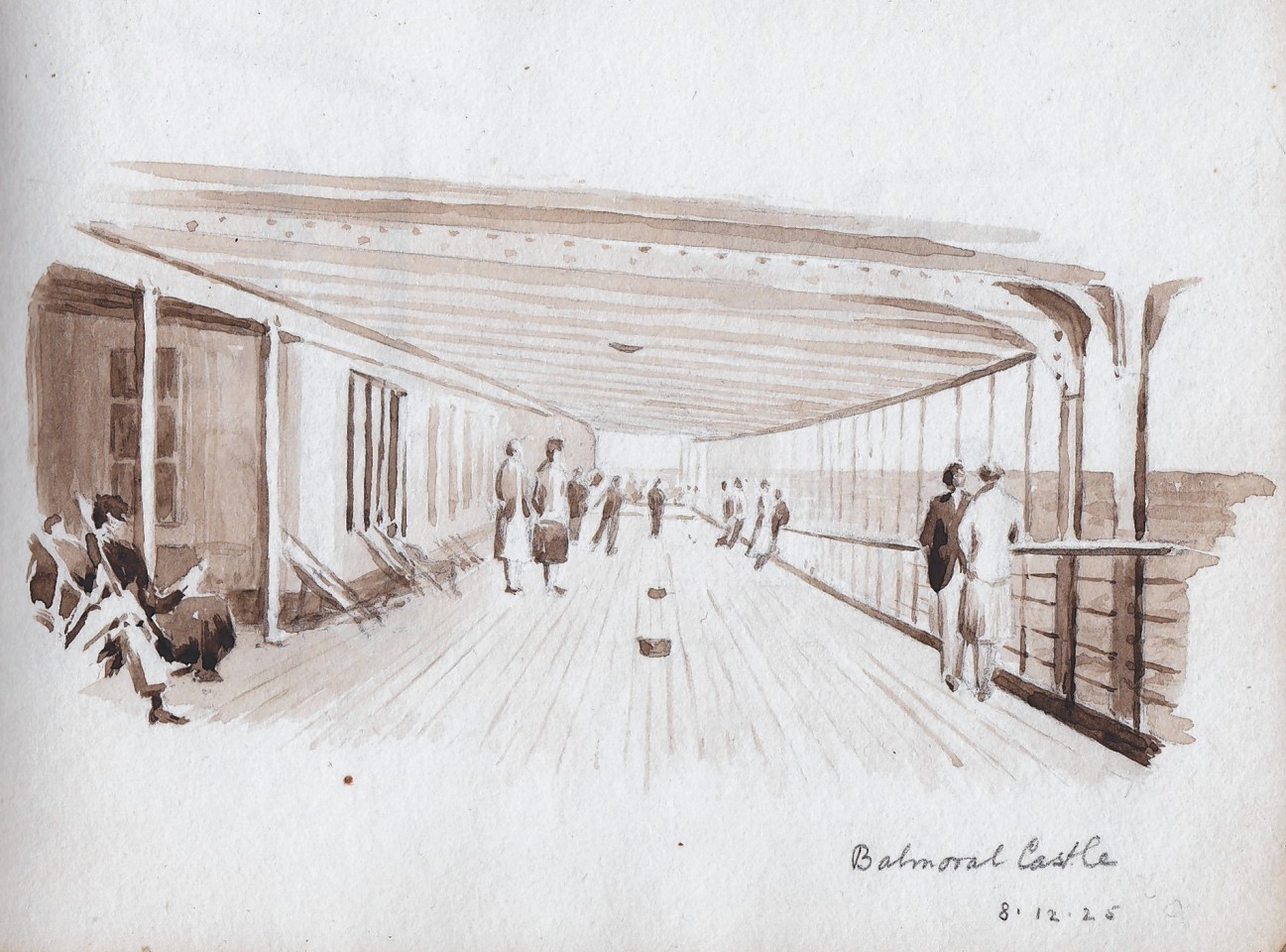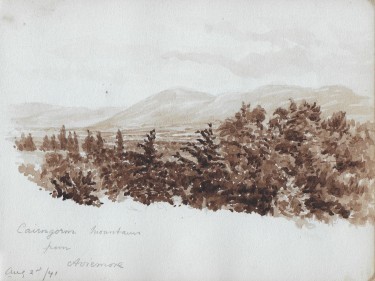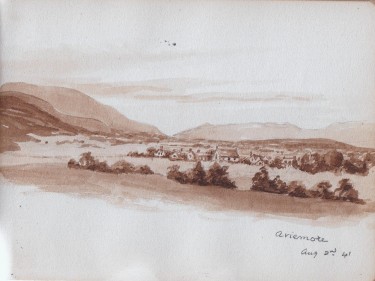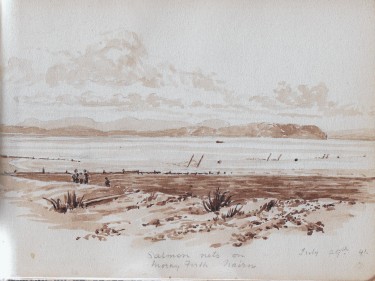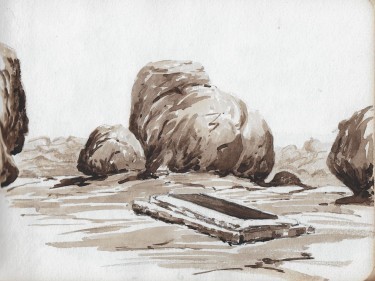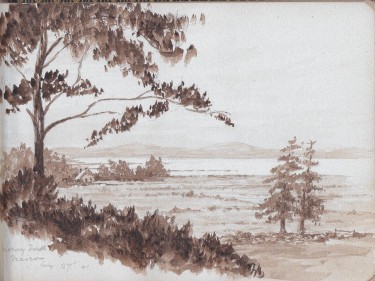It began with a lucky find in a London bookshop and has turned into a worldwide search for the identity of an elusive artist.
At its heart is a charming set of sketches that illustrate the adventures of an unknown person between the 1920s and 1940s.
John and Alicia Makin discovered the sketchbook, a slim blue leatherbound volume, in Chelsea in 1971, and have been gripped with the mystery of its creator ever since.
Some of the sketches were created as far away as Southern Rhodesia, now Zimbabwe, and also feature a variety of scenes from Nairn, Aviemore, and the Firth of Forth.
Mr Makin said the couple’s greatest wish is to discover the truth behind the mysterious sketch book.
In a bid to achieve this, they have published a book of the sketches entitled Sketchbook Mystery – On the Trail of an Artist Unknown.
“For us, it began over 40 years ago, and frankly, we are hardly closer to solving the riddle now than when we first came across it,” he said.
“The best mystery stories, of course, have a beginning, middle and an end. We have a beginning, we have a sort of middle, but we certainly do not have an ending. Our far-fetched ambition is that someone may come to us with that ending.”
The sketcher’s journey began in 1925 on the Balmoral Castle sailing to Madeira and then onto South Africa – and ended in the rubble of the Blitz in war-torn London almost 20 years later.
The majority of the sketches are captioned with the place name and date, but there is no indication of the artist’s identity.
After the scenes depicting Southern Rhodesia, there is a pause before the artists begins sketching again in the UK between 1940 and 1942.
In July 1941, a number of pictures were created of picturesque sights in Moray, including salmon nets on the Moray Firth. Aviemore and the Cairngorms are the next to feature.
The couple’s greatest clue to the identity of the sketcher is when they found the passenger list of the Balmoral Castle, which had around 225 people on board.
Mr Makin, of Oxshott, Surrey, said: “It is, of course, unreasonable to think that the artist is still alive today – he or she would be aged well over 100. On the other hand it is highly likely that children or grandchildren are still with us.”
To help unravel the mystery or want more information visit www.sketchbookmystery.co.uk
